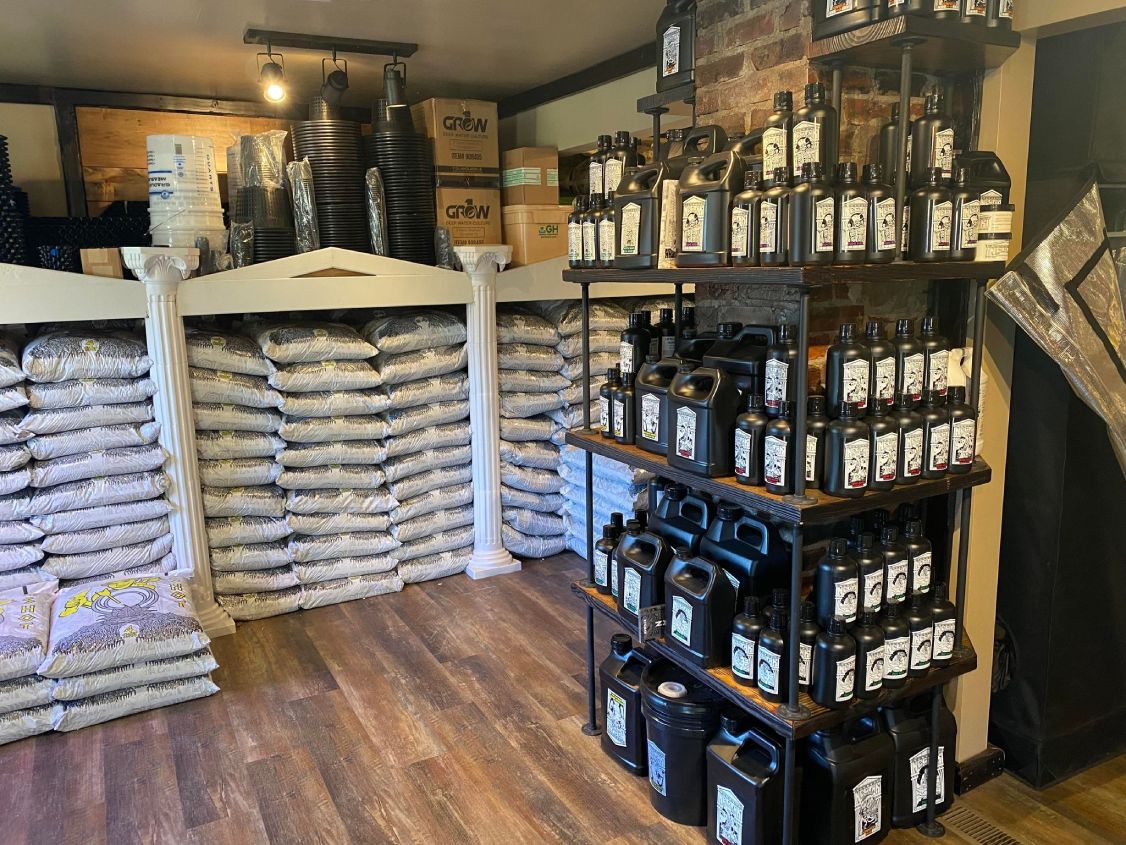The Ultimate Guide to Hydroponic Solutions and Techniques
In the world of modern-day farming, hydroponic systems have actually emerged as a groundbreaking technique for growing plants without soil. As we uncover the details of hydroponics in this extensive overview, we will certainly browse through the different kinds of systems, explore the necessary nutrients vital for plant development, and dig right into advanced methods that can significantly improve returns.
Advantages of Hydroponic Equipments
Hydroponic systems offer a wide range of benefits, consisting of reliable source utilization and accurate nutrient shipment to plants. By offering a regulated environment for plant development, hydroponic systems enable optimum water and nutrient usage, resulting in greater yields compared to traditional soil-based growing. This efficiency not only saves resources however likewise decreases waste, making hydroponic systems eco pleasant.
Moreover, the precise delivery of nutrients in hydroponic systems permits customization based on the particular needs of each plant variety. This targeted approach ensures that plants receive the right equilibrium of crucial nutrients, advertising much healthier growth and reducing the risk of nutrient deficiencies or imbalances. In addition, the ability to change and check nutrient levels in real-time maximizes plant efficiency and general plant quality.
Moreover, hydroponic systems get rid of the requirement for herbicides and chemicals, as the closed-loop system reduces the danger of insects and illness that are typically discovered in soil-based agriculture - The Indoor Earthworm. This not only profits the plants and the environment but additionally adds to producing cleaner, healthier plants for usage
Sorts Of Hydroponic Setups

Deep Water Society (DWC) entails putting on hold plant origins in a nutrient solution, enabling sufficient oxygenation. Nutrient Film Strategy (NFT) utilizes a superficial stream of nutrient solution moving over the plant origins, giving a constant supply of nutrients. Ebb and Circulation systems flooding the plant origins at intervals, ensuring they receive nutrients and oxygen. Drip systems involve leaking a nutrient option onto the plant roots, providing accurate control over feeding. Aeroponics mists the plant origins with a nutrient remedy, maximizing oxygen absorption.
Each sort of hydroponic setup has its benefits and is fit to different plant selections and development stages. Comprehending the unique features of these systems can aid hydroponic cultivators choose one of the most appropriate setup for their particular needs and choices.
Vital Nutrients for Hydroponics
In hydroponic systems, plants count on a precise equilibrium of essential nutrients to grow and expand efficiently. These crucial nutrients are essential for various plant features such as photosynthesis, root advancement, and overall development. The primary macronutrients needed by plants in hydroponic systems are potassium, phosphorus, and nitrogen. Nitrogen is necessary for leafy eco-friendly development, phosphorus aids in origin development and flower/fruit manufacturing, while potassium assists in total plant wellness and condition resistance.
In enhancement to macronutrients, plants also need second nutrients like sulfur, magnesium, and calcium, as well as trace elements such as iron, copper, zinc, and manganese (The Indoor Earthworm). These nutrients are vital for making sure that plants have all the essential foundation to carry out necessary organic procedures

Advanced Methods for Optimum Yield
To accomplish optimal returns in hydroponic systems, growers can execute advanced strategies that improve plant development and efficiency. Additionally, utilizing strategies like plant training and pruning can help enhance light distribution and air movement, making sure that all components of the plant get sufficient light and nutrients. Making use of automated systems for nutrient shipment and monitoring can aid maintain optimum nutrient levels, minimizing the risk of deficiencies or imbalances that can prevent plant growth.
Troubleshooting Common Hydroponic Issues
When confronted with obstacles in hydroponic systems, cultivators commonly experience usual issues that can prevent plant growth and efficiency. One widespread issue is nutrient shortages, where plants do not have vital components for healthy advancement. To battle this, regular surveillance of nutrient levels and changing the nutrient remedy appropriately is crucial. One more usual problem is pH imbalance, which can cause nutrient lockout and poor absorption. Keeping the correct pH range particular to the plant being grown is vital for optimum nutrient uptake. Furthermore, inadequate oxygen levels in the root area can lead to origin rot and stunted growth. Making sure correct oygenation and oxygenation of the nutrient solution can assist avoid this trouble. Bug problems, such as aphids or crawler termites, can likewise plague hydroponic systems. have a peek at this website Executing incorporated parasite monitoring techniques and frequently checking plants can aid regulate and protect against infestations. By quickly determining and attending to these typical hydroponic problems, cultivators can preserve healthy and balanced plants and take full advantage of yields in their hydroponic systems.
Final Thought
In final thought, hydroponic systems provide numerous advantages for growing plants efficiently. By utilizing numerous sorts of configurations and providing crucial nutrients, cultivators can achieve optimal return with advanced techniques. It is vital to fix typical issues that might develop in order to preserve a successful hydroponic procedure. With careful preparation and interest to information, hydroponic systems can change the method plants are grown, causing more lasting and efficient agricultural methods.
By giving a regulated atmosphere for plant development, hydroponic systems enable ideal water and nutrient use, leading to higher yields contrasted to traditional soil-based growing. The these details Indoor Earthworm. Nutrient Movie Technique (NFT) utilizes a superficial stream of nutrient solution flowing over the plant origins, supplying a continuous supply of nutrients. Surveillance and adjusting nutrient levels based on plant development stages is important to preventing vitamins and mineral shortages or toxicities and making best use of plant productivity in hydroponic systems
Furthermore, utilizing methods like plant training and trimming can help optimize light distribution and air flow, making sure that all components of the plant obtain adequate light and nutrients. Making use of automated systems for nutrient delivery and monitoring can help preserve ideal nutrient levels, minimizing the threat of deficiencies or discrepancies that can impede plant growth.